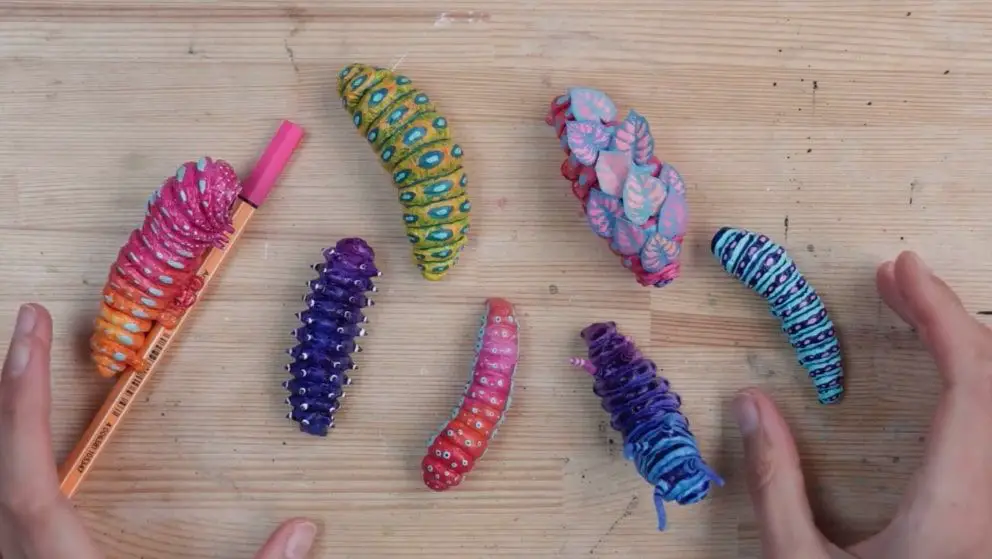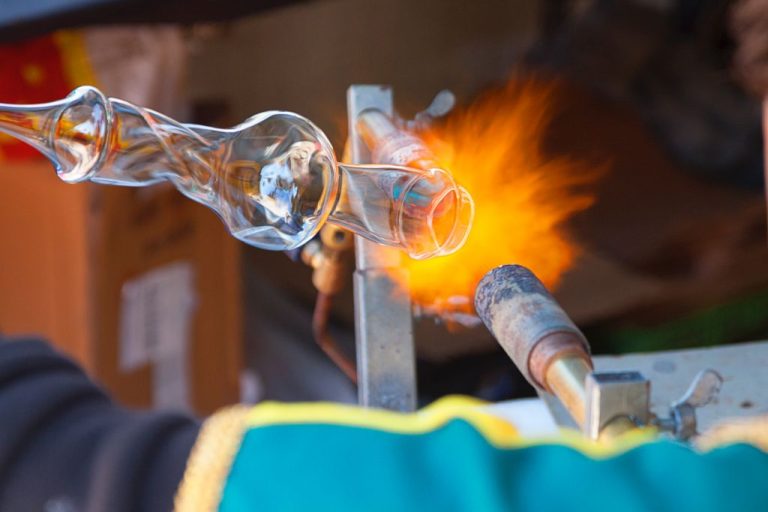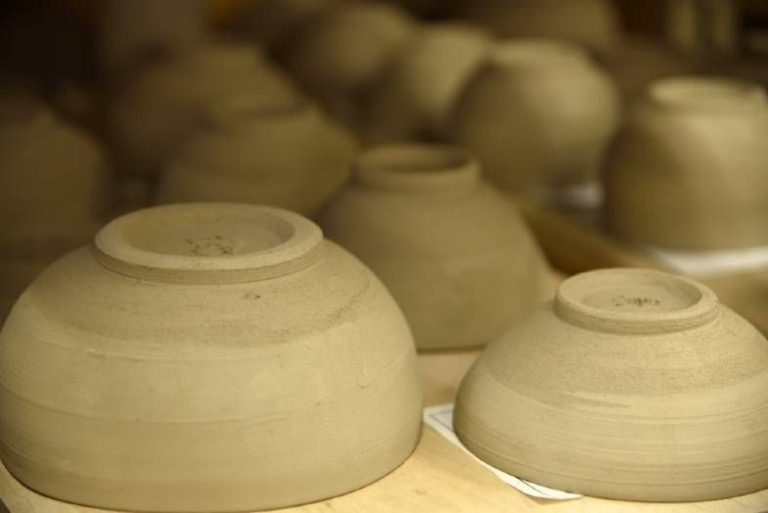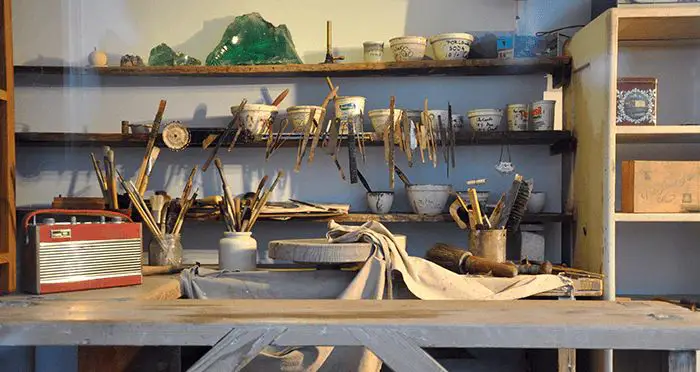Is Air Dry Clay Ok For Jewelry?
What is Air Dry Clay?
Air dry clay, as the name suggests, is clay that dries or cures with air. It is made from materials like cellulose, silicone, or natural polymers mixed with clay or ceramic fillers. Unlike traditional clays that require firing in a kiln, air dry clays will harden at room temperature over time as the water evaporates (Source: https://2wardspolymerclay.com.au/whats-main-difference-air-dry-clay-and-polymer-clay/).
There are two main types of air dry clays:
- Cellulose-based clays that use materials like paper, flour, and glue. These are lightweight and easy to work with.
- Polymer-based clays that use synthetic polymers like PVA glue or silicone. These clays are more durable but can be more difficult to use.
Compared to traditional clays, air dry varieties are easier to work with and don’t require specialized tools or a kiln. However, they can be less durable over time. The curing time depends on factors like clay thickness and air circulation. Most air dry clays will fully cure in 24-72 hours.
Is Air Dry Clay Durable Enough for Jewelry?
Air dry clay is lightweight and easy to work with, making it popular for jewelry and craft projects. However, some crafters have concerns about its strength and durability for jewelry that will be worn daily.
Air dry clay is not as strong as polymer clay or ceramic clay that has been fired in a kiln. However, there are techniques to strengthen air dry clay to make it more durable:
- Apply a clear acrylic sealant like Mod Podge over the finished piece to help harden and protect the clay.
- Layer additional coats of air dry clay to build up thickness and strength in structural areas.
- Insert stiffening materials like wire, toothpicks or aluminum foil into pieces while sculpting for extra reinforcement.
- Use patterned acrylic rolling pins and molds when conditioning the clay to add texture – this makes air dry clay stronger.
- Allow finished pieces to air dry for several days to fully harden before wearing.
Reviews of the popular Creatology Air Dry Clay report that jewelry made with proper finishing techniques can be very durable for regular wear. Lighter pendants and earrings tend to be strong enough, while heavier wearable pieces may be more prone to damage over time.
Advantages of Using Air Dry Clay for Jewelry
Air dry clay has several advantages that make it a popular choice for creating jewelry and other crafts. Some of the main benefits include:
Easy to use and mold – Air dry clay is very malleable and easy to shape by hand without requiring special tools or equipment. It’s great for beginners since it doesn’t require any baking or firing. You can roll coils, sculpt shapes, and imprint textures easily. According to Sculpey, “Air-dry clays are extremely pliable and easy to shape by hand” (source).
Fast drying time – One of the best features of air dry clay is that pieces dry quickly, often within 24 hours or less. This allows you to work faster and complete projects in a shorter timeframe compared to clays that require baking or firing. According to Art to Art Net, drying times for air dry clay are “quite fast” in comparison to other clays (source).

Lightweight when dry – Air dry clay is very lightweight when dried, which is ideal for jewelry and wearables. The finished pieces don’t add a lot of weight, making them comfortable to wear. Polymer clay in comparison can be quite heavy.
Variety of colors – Air dry clays come in a rainbow of bright, vivid colors perfect for jewelry and crafts. You can easily mix and blend custom colors as needed without worrying about proper clay mixing or firing temperatures.
Disadvantages and Limitations
While air dry clay offers some advantages over other clays, it also has some drawbacks to be aware of:
Brittleness – One of the biggest disadvantages is that air dry clay becomes quite brittle and fragile when fully dry. Pieces can easily break or crack if dropped or handled roughly. For this reason, air dry clay may not hold up well to frequent wear and tear if used for jewelry. Thin pieces are especially prone to cracking and breaking once dried.1
Cracking – Air dry clay tends to shrink slightly as it dries, which can lead to cracking if the clay is too thin or shaped inconsistently. Jewelry pieces may develop hairline cracks or split entirely if the clay is rolled too thin.
Limited High Heat Items – Traditional air dry clays have relatively low heat tolerances, making them unsuitable for items like brooch pins that require high kiln firing temperatures. Specialty polymer air dry clays formulated for baking can withstand slightly higher temperatures, but standard clays will scorch if baked.2
Best Techniques for Using Air Dry Clay
Air dry clay must be properly conditioned and kneaded before use to achieve the best results. Kneading helps soften the clay and make it more malleable. It is also important to allow adequate drying time. The thicker the piece, the longer the drying time required, which can range from 24 hours up to several days. Thinner pieces may only need a few hours.
Once thoroughly dry, pieces should be lightly sanded to smooth any rough edges. Sanding also prepares the surface for painting or sealing. Applying a sealant is highly recommended as it helps protect the clay and provides a nice finished look. Polyurethane and acrylic sprays work well as sealants. Allow each coat to fully dry before adding another. Two to three thin coats are ideal for the best protection. Refer to product instructions for proper application and drying times.
Proper conditioning, drying, sanding, and sealing are key techniques for successfully working with air dry clay when making jewelry. Allowing enough time for each step helps achieve quality results.
Source: https://www.instructables.com/An-Intro-to-Air-Dry-Clay-Jewelry/
What Items Work Best?
Air dry clay works well for making certain jewelry pieces. Beads, pendants, and earrings tend to be the most popular and successful air dry clay jewelry items. The clay can be easily molded and shaped into these smaller pieces, and they can readily be painted, decorated, and sealed. Charm bracelets made up of air dry clay beads and pendants are also common projects. According to Gathering Beauty, air dry clay is an ideal choice for “jewellery pendants as you can really show off your modelling skills with interesting 3D shapes” (source).
For jewelry that needs more durability and support, thicker bangles and cuffs work better than delicate rings or thin bracelets. The thicker the clay, the stronger it will be once dried. Avoid very thin and fragile pieces, as air dry clay can be prone to chipping, cracking, or breaking if it is too thin. As The Blue Bottle Tree advises, “Items made from air dry clay must not be too thin or they’ll be fragile and break easily” (source). Keep jewelry pieces fairly thick and robust for best results.
Painting and Coloring Options
There are several options for painting and coloring air dry clay to achieve different looks and effects:
Acrylic paints are one of the most popular and easiest ways to add color to air dry clay. They adhere well to the clay surface and provide vibrant hues. Acrylics also come in metallic and pearlized varieties for shimmery effects. Be sure to add a sealant over acrylic paint to protect the finish.[1]
Many clay manufacturers produce air dry clay in an array of premixed colors, like terracotta, blue, green and more. This allows jewelry makers to simply use colored clay varieties to create patterns, stripes, dots or other designs without needing to paint.
Using alcohol inks, fabric dyes, food coloring or other types of concentrated liquid pigments can stain air dry clay to tint it or create marbled effects. These work best on white or natural clay. Allow colors to fully soak in before sealing.
Metallic craft powders in bronze, copper or silver can be dusted or mixed in with air dry clay before baking to create shimmery jewelry pieces with a lustrous patina. Clear sealants help metallic powders adhere.
Finishing and Sealing
Properly sealing pieces made with air dry clay is important for protecting them and making them more durable. There are a few good options for finishing and sealing air dry clay:
Clear acrylic spray sealers work well for sealing air dry clay and providing a protective finish. Sprays like Krylon Crystal Clear Acrylic Coating provide a water-resistant protective layer and help prevent chipping or cracking. As noted in this article, acrylic sealers are a good choice for sealing air dry clay jewelry: https://www.gathered.how/arts-crafts/art/pottery/varnish-for-air-dry-clay.
Polyurethane, resin, or varnish can also be used to seal and coat air dry clay. Products like Minwax Polycrylic Protective Finish provide a clear, protective and water-resistant layer. As with acrylic sprays, these sealants help protect the clay from damage. One tip is to avoid oil-based polyurethane, as it can cause cracking or peeling.
Finally, a simple DIY sealing option is applying a wax finish. As described here, you can create a sealant by mixing beeswax with a small amount of vegetable oil, then rub the mixture into the clay: https://www.artshedonline.com.au/blog/art-shed-blog/how-to-seal-air-dry-clay/. The wax soaks into the clay to provide a protective barrier.
Testing different sealants on clay scraps first is recommended to ensure compatibility and desired results. With proper sealing, air dry clay pieces can gain increased durability and longevity.
Safety Tips
When working with air dry clay, it’s important to follow some basic safety guidelines:
Make sure you have proper ventilation when using air dry clays. Some clays release ammonia as they cure, so having good airflow can prevent buildup of fumes. Work in a well-ventilated area or open a window.
Avoid prolonged skin contact with uncured clay. The uncured clay can be slightly irritating for some people, so wear gloves when sculpting. Wash hands after working with the clay. The cured clay is non-toxic and safe for skin contact.
Once fully cured and dry, air dry clays are non-toxic and safe. Make sure clay is completely dry before using in jewelry or crafts. Check packaging for full curing times. Fully cured air dry clay that has dried to a solid state is considered non-toxic.
As with any crafting material, basic precautions like washing hands and avoiding ingestion should be followed. But when properly cured, air dry clays present no major health hazards and are safe for even children to use (Air-Dry Polymer Clay From Sculpey).
Popular Brands of Air Dry Clay
There are a few major brands of air dry clay that are popular for making jewelry and other crafts:
Sculpey Air Dry Clay – This clay from Sculpey is lightweight and easy to work with. It air dries to a hard, durable finish that can be sanded, drilled, and painted. Sculpey offers white, terracotta, and gray air dry clays. According to crafters, it has a smooth texture and good flexibility when moist, making it easy to sculpt detailed pieces. Once dried, it retains detail well. Sculpey Air Dry Clay can be purchased on Amazon or at craft stores like Michaels.
Makin’s Air Dry Clay – Makin’s is a modeling clay brand that has been around for years. Their air dry clay is a smooth white clay that air dries in 24 hours to a hard finish. It’s non-toxic and can be painted once dry. Makin’s clay is sold at craft and hobby shops as well as online. Many reviewers praise its versatility – it can be used to make jewelry, figurines, ornaments, and more. The clay holds fine details well.
Creative Paperclay – Thisair dry clay contains cellulose fiber, giving it a texture slightly different from regular clay. It air dries lightweight yet strong, making it a good choice for jewelry, embellishments and more. Creative Paperclay takes on paint and stains nicely. It’s available at art supply stores and online. Reviews indicate it has a smooth, easy to work with texture and good flexibility when moist.




